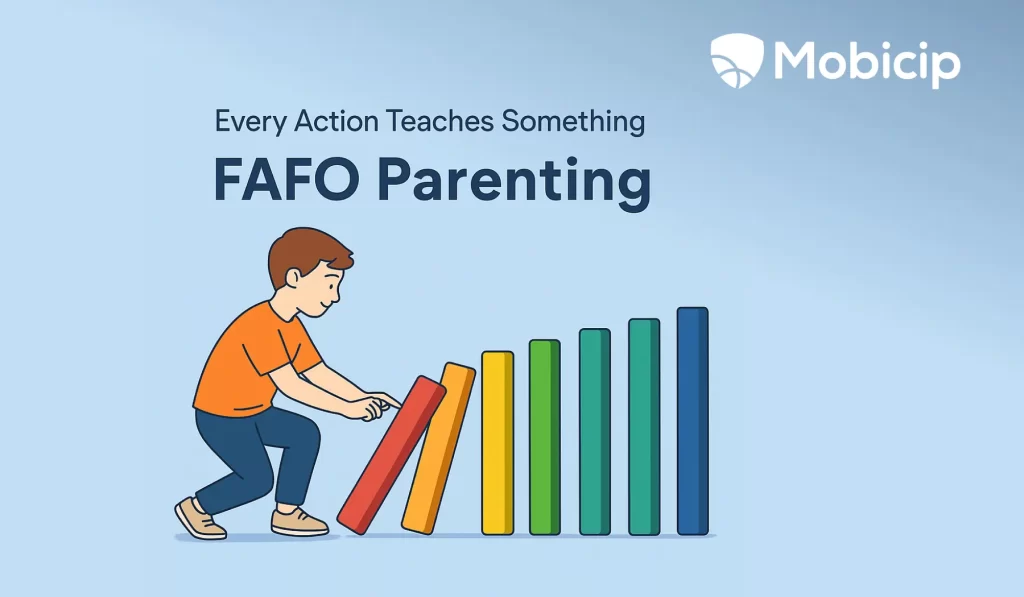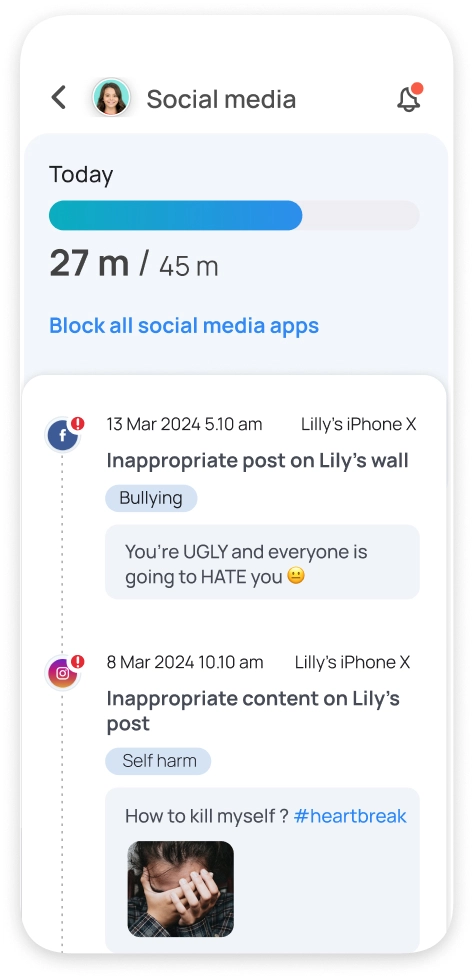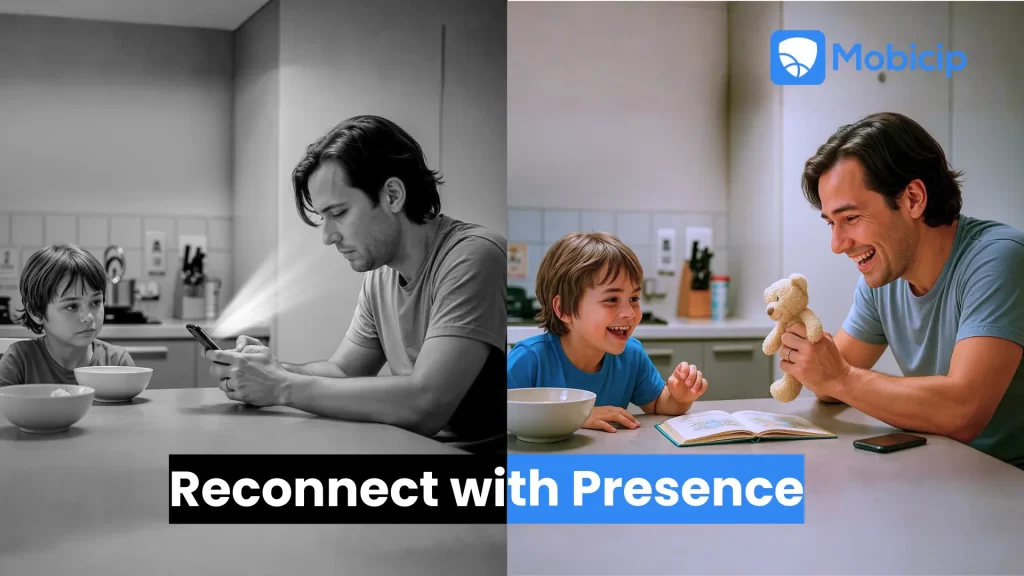What Is FAFO, the New Parenting Trend Going Viral?
The new trend in parenting is FAFO Parenting.
FAFO (faff-oh) is short for the rather colorful phrase “F*** Around and Find Out.” For those of us who prefer a softer touch, we’ll go with “Fool Around and Find Out.”
But find out what? Read on.

FAFO has become the viral counter-movement to the gentle parenting style many of us adopted with Gen Z. The idea is simple: we guide, we warn, we explain—but if a child chooses to ignore the boundary, then the natural consequence steps in as the teacher. No yelling, no drama, no ten-minute lectures. Just reality doing its job.
Didn’t pack the homework despite having the time? Enjoy explaining that to the teacher. Kept sneaking screen time after lights-out? The tablet takes a quiet holiday the next day. Refused to wear shoes for the playground? Well, the hot sand or cold pavement has its own gentle (or not-so-gentle-find-out-for-yourself) opinions.
This article will walk you through what FAFO really means in parenting today—and how Mobicip can help you create a balanced approach that is neither overly soft nor cold and detached. It’s about finding the sweet spot where boundaries, consequences, and connection work together.

Origins and Cultural Context of FAFO Parenting
FAFO didn’t come from the parenting world at all—it started as internet slang used to signal that if someone crossed a line, a consequence was coming. The term has roots in African American Vernacular English (AAVE) and has been around for more than a decade. Its popularity surged in recent years, and parents began using it to describe a style where children are allowed to face the natural outcomes of their choices without too much adult interference.
The real shift happened when TikTok creators, Instagram reels, and parenting podcasters picked it up, framing FAFO as a calm, consequence-led way to guide kids. When Kylie Kelce mentioned FAFO on her podcast, the concept shot into mainstream parenting conversations, and countless influencers ran with it, sharing relatable “FAFO moments” from their own homes.
What began as a meme quickly evolved into a framework: kids test limits, parents stay calm, and natural consequences do the teaching. Many parents today are looking for something that sits between permissive softness and rigid, emotionless discipline. FAFO offers that middle ground—one where accountability, reality checks, and empathy can coexist.
Why FAFO Is Going Viral
FAFO is striking a chord with today’s parents because it offers relief from parenting extremes. For years, many of us bounced between helicopter parenting (hovering), tiger parenting (pushing), and soft parenting (endlessly accommodating). Somewhere in the middle, we lost our balance—and our energy. FAFO brings back a simple idea: instead of rescuing, micromanaging, or over-explaining, let natural consequences do part of the teaching. In a noisy world full of conflicting advice, this feels refreshingly practical.
Burnout from over-parenting
Many parents are worn out from constantly preventing problems before they happen. Helicopter and tiger-style approaches require a never-ending level of involvement. FAFO gives parents a breather by allowing kids to face minor, safe consequences, reducing the emotional and mental load on adults.
Desire for children to learn autonomy
Soft parenting often tries to spare kids from discomfort, but that can unintentionally limit independence. FAFO reintroduces autonomy by giving children space to make decisions—and experience the outcomes—so lessons stick more naturally.
Social media’s role in amplifying relatable parenting moments
TikTok and Instagram have pushed FAFO into mainstream parenting culture. Short, relatable videos show real-life moments where allowing consequences actually works. These clips reassure parents that FAFO isn’t harsh—it’s practical.
Benefits of FAFO Parenting
FAFO can help children develop emotional intelligence by connecting choices to outcomes. It builds problem-solving skills because kids learn to think ahead. And for parents, FAFO lowers stress by removing the pressure to control everything, offering a healthier balance than the extreme styles we’ve seen before.
FAFO vs. Other Parenting Styles
FAFO sits in a thoughtful middle zone among the different parenting approaches we see today. It combines structure with calm emotional tone and lets natural consequences do the teaching. To understand where it fits, here’s how it compares with other well-known styles.
Gentle parenting: empathy-driven
Gentle parenting offers high warmth and emotional validation but can sometimes drift into lower structure when parents over-explain or over-negotiate. At its extremes, it can even lead to helicopter tendencies—stepping in too quickly to prevent discomfort. FAFO keeps the warmth but adds steady boundaries, allowing children to learn through real-life outcomes.
Authoritative parenting: warm + structured
Authoritative parenting balances warmth with clear expectations, which makes it closely aligned with FAFO. The key difference is that FAFO leans more heavily on natural consequences rather than parent-imposed ones. It’s authoritative parenting with a modern, less intervention-heavy twist.
Authoritarian (tiger) parenting: strict + low warmth
Tiger parenting fits under the authoritarian style—high control, little flexibility, and low emotional warmth. FAFO stands in direct contrast. It doesn’t push, pressure, or punish. Instead, it trusts that safe, real-world consequences will guide behaviour without harshness.
Permissive and helicopter parenting: minimal boundaries or over-involvement
Permissive parenting offers lots of warmth but few boundaries. Helicopter parenting can grow out of this or out of gentle parenting when parents become over-involved. FAFO differs by maintaining clear limits while staying emotionally steady and connected.
In short:
- Authoritative = warm + structured
- Authoritarian (tiger) = strict + low warmth
- Gentle (at times) = high warmth + lower structure
- Helicopter = over-involved versions of gentle or permissive parenting
- FAFO = structure + natural consequences + calm emotional tone
FAFO offers a practical middle path that blends boundaries, warmth, and real-world learning.
How to Apply FAFO Safely and Effectively
FAFO works best when it’s used thoughtfully, with care for your child’s emotional well-being. The goal isn’t to “let them suffer” but to give them safe, real-world experiences that help connect choices with outcomes. Here are simple ways to put FAFO into practice without crossing into harshness or emotional distance.
- Start with low-stakes situations. Begin with small, everyday moments—forgetting a water bottle, not packing a favourite toy, refusing a jacket. These minor inconveniences teach responsibility without causing distress.
- Debrief with your child afterward.Once things have settled, have a calm, short conversation. Ask what they learned, what they might do next time, and remind them that you’re always on their team. The reflection is just as important as the experience.
- Avoid using FAFO in emotionally sensitive contexts. Don’t apply FAFO when a child is tired, overwhelmed, sick, anxious, or facing big feelings. These moments need support, not consequences.
- Stay consistent but kind. Hold the boundary but keep your tone warm. FAFO works when kids feel safe and connected, not shamed.
- Model the mindset. Show how you handle your own consequences—missing a deadline, forgetting something, or overbooking yourself. Kids learn more from what we do than what we say.
Used well, FAFO becomes a balanced, healthy way for children to learn accountability while still feeling supported.
FAFO Parenting in the Digital Age: Screen Time & Online Behavior
FAFO only works when the “F around” part is safe enough for kids to learn from. Aand that’s the tricky part with online life. Offline, we can let teens face the natural results of forgetting homework or overspending their allowance. But online, the consequences can be much more serious and sometimes tied directly to their safety.
How do we let kids learn from their choices without letting them walk into danger?
- Keep the stakes safe. FAFO doesn’t mean we let them accept random DMs or wander into unsafe apps “to learn a lesson.” It means we let them handle manageable consequences—like losing game time because they broke a family tech rule—while we still quietly protect them from the high-risk stuff they can’t see coming.
- Create “safe-to-fail” zones online. For example, let them decide how much time to spend on a project or which friend group chat to join, but not whether to turn on location sharing or talk to strangers. They get independence where it’s safe; you stay firm where safety is non-negotiable.
- Explain why some consequences are too dangerous to learn the hard way. Teens actually respond well when we’re honest: “I want you to experience natural consequences. But online choices can affect your safety, so there are a few places where I can’t ‘let you learn.’ That’s not control; that’s protection.”
- Protect them quietly in the background. Tools like Mobicip help you keep an eye on risky behavior—unknown contacts, unsafe searches, suspicious apps—without hovering over their shoulder or micromanaging every move. They still feel independent; you still know they’re safe.
- Use consequence-based parenting for the behavior, not the danger. If they ignore a screen-time limit, the consequence is loss of privileges. If they hide accounts, the consequence is rebuilding trust. But you never use silence as a consequence when safety is at stake. Safety is always a conversation.
- Keep communication open so they tell you before things spiral. The real FAFO win is when your teen thinks, “Okay, I messed up. Let me tell my parent—they won’t freak out.” That only happens when we keep judgment, shame, and lectures out of the equation.
Mobicip’s Role in Supporting FAFO Parenting
Mobicip helps parents apply FAFO without compromising safety. Its tools create firm boundaries while allowing natural consequences to unfold—calmly, predictably, and without constant nagging.
Here’s how specific Mobicip features support FAFO:
-
Screen Time Limits
How it supports FAFO: When time is up, the device locks automatically. If a child uses up their time earlier, the natural consequence is no access later.

-
App Usage Reports
How it supports FAFO: Both parents and kids can see exactly how much time they spent on each app. If they waste time on unproductive apps, the logical outcome is adjusting their access.

-
Content Filters
How it supports FAFO: Children get autonomy within safe boundaries. If they try to bypass filters or access blocked content, Mobicip alerts you—leading to a natural, trust-based consequence like losing that app temporarily.

-
Device Schedules
How it supports FAFO: If kids stay up late scrolling, the device shuts off at bedtime automatically. The tiredness the next day becomes the real-world reminder.


Conclusion
FAFO isn’t a trend that’s here today and gone tomorrow—it’s a reminder that kids grow when we trust them to navigate the small bumps of life while we guide from the edges. As families move through an increasingly digital, fast-paced world, this approach encourages resilience without sacrificing connection. The goal isn’t to toughen kids up, but to help them recognize their own influence on outcomes and choices. With thoughtful boundaries and tools that support—not smother—their independence, we can raise children who feel capable, confident, and ready for a world where cause and effect shape real maturity.






